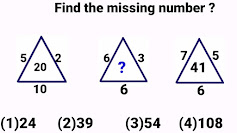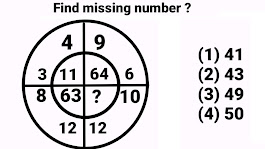Reasoning questions with answers for competitive exams, Reasoning questions with answers for bank exams
Reasoning questions with answers for competitive exams and bank exams
Problem # 1
Last row /Bottom Row
2nd last row
3rd last row
Problem # 2
Problem # 3
Problem # 4
Problem # 5
Problem # 6
Problem # 7
Problem # 8
Problem # 9
1st figure
2nd figure
3rd figure
Problem # 10
Reasoning Problems #11
Reasoning Analogy #10
Reasoning Questions #9
Circle Reasoning #8
Ten Box-Problems #7
Ten Reasoning problems #6
Ten-Important-Problem#5
Ten--Tricky-Puzzles #4
Twelve-Figures-Problems#3





































